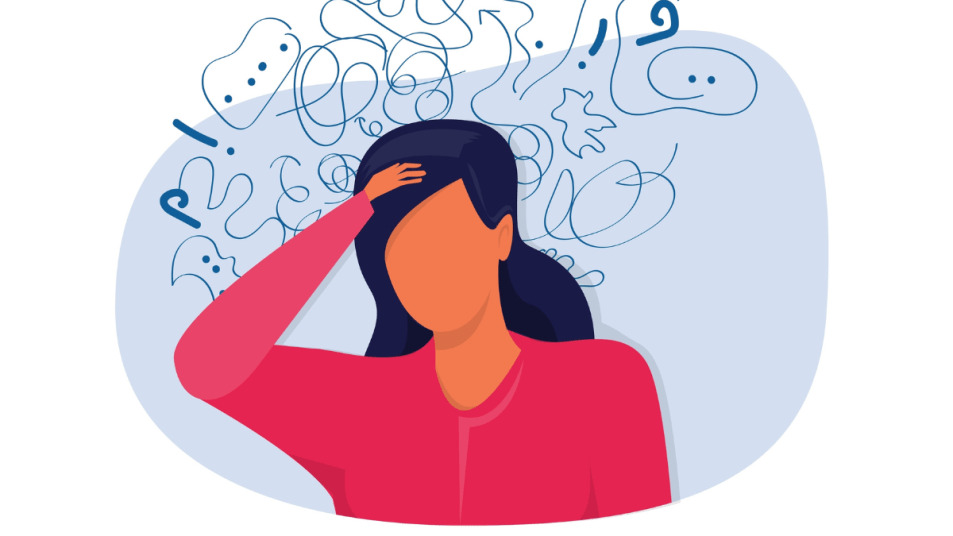Women Have ADHD, Too: 15 Signs That It’s Causing Your Inability to Focus
Women often exhibit different symptoms than men.

Have you ever been told you’re a “selective listener,” or that you make careless mistakes? Do you have difficulty concentrating on certain tasks or keeping track of your things? You may have ADHD, short for attention deficit hyperactivity disorder.
If that sounds far-fetched, here’s why: Growing up, you likely learned that ADHD mostly affects young boys, and the symptoms include hyperactivity and impulsiveness. So, you would be right in thinking more boys and men are diagnosed with ADHD than girls and women; just 4.2 percent of US women receive an ADHD diagnosis, in contrast to 13 percent of men. However, that’s often because women exhibit very different symptoms. To give us a better understanding of this neurological condition, we reached out to Dr. Zoe Martinez, Clinical Leader, MD, PHD, for Done ADHD.
What is ADHD?
“Attention deficit hyperactivity disorder is a brain disorder that results in a variety of symptoms in multiple categories, including problems with attention and concentration, impulsivity, and hyperactivity,” says Dr. Martinez. She explains that these symptoms occur because neurotransmitters are disrupted. (Neurotransmitters are chemical messengers that carry signals from one neuron to the next.)
Why do neurotransmitters get disrupted? That has to do with genetics. “People with ADHD have at least one defective gene — the DRD2 gene — that makes it difficult for neurons to respond to dopamine, the neurotransmitter that is involved in feelings of pleasure and the regulation of attention,” Dr. Martinez says. “However, many individuals have other neurotransmitter deficiencies.”
What are the most common symptoms of ADHD in women?
ADHD comes in three forms: predominantly inattentive, predominantly hyperactive-impulsive, and combined inattentive and hyperactive. While women and girls can experience any of these forms, they are most often predominantly inattentive. Some of the most common symptoms of predominantly inattentive ADHD include distractibility and difficulty completing work that requires sustained concentration. Here are some more typical symptoms:
- Failure to pay close attention to detail; making careless mistakes
- Difficulty maintaining attention during a task
- Appearing not to be listening
- Struggling to follow instructions
- Difficulty staying organized, losing personal belongings easily
- Avoiding tasks that require sustained mental effort
- Easily distracted
These are some additional symptoms of ADHD in women, some of which are less common:
- Talking excessively
- Fidgeting
- Acting impulsively, speaking without thinking
- Appearing to daydream, but during that time your mind is going “a mile a minute”
- Easily making friends, but having difficulty sustaining friendships (this may be because you forget to text or call)
- Doing activities that require extreme and unhealthy self-discipline
- Taking on compensatory strategies — these are behavioral modifications and strategies that help you bypass persistent inattention
- Locking in on one task, and having a hard time moving to another task
Why are ADHD diagnoses in women often missed?
“Women tend not to have hyperactivity and impulsivity, so if they are quietly inattentive, this may often be missed,” explains Dr. Martinez. In addition, many women may assume they don’t have ADHD, and therefore won’t seek a diagnosis.
For instance, a woman may think she doesn’t have ADHD because she can concentrate on some tasks. While it’s true that lack of concentration is a common symptom, another symptom is hyper-focusing: when a person locks in on a task (especially one they enjoy) and has a hard time shifting to another task.
Should a woman with ADHD who is 40+ receive ADHD medication?
You may be worried about adding an ADHD medication to your routine if you’ve gone for so many years without it. However, it could help alleviate your symptoms. “If a patient meets the criteria for ADHD and has no contraindications to medication, as a psychiatrist, I would absolutely discuss prescribing medication to treat her symptoms,” says Dr. Martinez.
The two primary categories for ADHD medication include stimulants (e.g. Adderall), which immediately increase dopamine and norepinephrine in the brain, and non-stimulants (e.g. Strattera), which slowly increase norepinephrine levels over weeks. Side effects may include decreased appetite, weight loss, difficulty sleeping, anxiety, upset stomach, and changes in blood pressure and heart rate, so your doctor may have you to try different medications and different dosages to see what works for you.
What other treatment methods do you recommend?
If you and your doctors decide that ADHD medication isn’t a right fit for you, there are other things you can do to help treat your symptoms. “Other treatment methods include organizational strategies to help complete work, a regular sleep-wake cycle, a regular exercise schedule, and asking for support from family, friends and coworkers,” says Dr. Martinez. The best place to start? Schedule an appointment with a mental health therapist to see what tactics they recommend.
Why is it important to get a diagnosis?
Many conditions can mimic ADHD, including anxiety, mood disorders, or learning disabilities. As a result, it’s important to talk with a psychiatrist who will work with you to understand your symptoms and give you the right diagnosis. If you do have ADHD, a diagnosis — even later in life — will be beneficial. First and foremost, it will help you better understand yourself and why you have difficulty completing certain tasks. From there, a treatment plan can help you overcome the challenges you face.
This content is not a substitute for professional medical advice or diagnosis. Always consult your physician before pursuing any treatment plan.
















